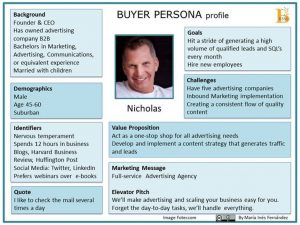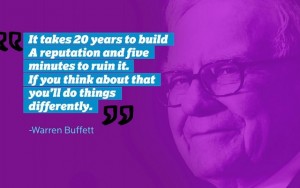
In the world of business-focused social media marketing, there is only one name worth mentioning: LinkedIn.
It is by far the biggest and most popular social network by businesses and for businesses, and it’s growing larger every day.
According to recent numbers, LinkedIn already has nearly 350 million users around the world, with more than a hundred new accounts registered every minute. Billions of profile pages are viewed every quarter. Even an average CEO on LinkedIn will have hundreds of connections, reading and sharing their thoughts around the world. After all, LinkedIn is active in 200 countries, and available in 20+ languages.
As such, there are few (if any) other websites with more potential to boost the exposure, the popularity and, of course the profits of a company that uses it. LinkedIn is where you can make yourself known to the world, and build networks of useful corporate contacts that can form the foundation of highly beneficial partnerships in the future.
Today, we’ll take an in-depth look at LinkedIn, with everything you need to know to get up and running… even if you’ve never used it before!
Four Steps To LinkedIn Marketing Success
Before we get started, here’s one piece of advice: Don’t be impatient.
Social media marketing success does not happen overnight. Generally, an investment of 6-12 months of work will be needed to see real payoff. Just as in real life, building effective personal networks takes time to accomplish.
We see a lot of people and businesses go “all-in” on social media, but only for a month or two. Like sprinters attempting a miles-long marathon, they burn themselves out too early, then lose out on the long-term benefits. You can see this for yourself if you browse LinkedIn profiles. Plenty of them show huge activity for a few months, then are seemingly abandoned.
Like the famous turtle from Aesop’s fable, “slow and steady” will win this race. Consistency, high-quality posts, and dedication are the true keys to success here.
So, let’s get going!
1. Creating Your Profile and Optimizing It
The basic signup process for LinkedIn is quick, easy, and free. To get started, all you have to do is fill out a quick form on the LinkedIn site and have a valid email address to tie to the account.
If you’re already a Facebook user, you can also sign up for LinkedIn via Facebook. Whether you want to tie these accounts together is entirely up to you, but we’d tend to discourage it. Most people want to have their private/personal Facebook page separate from their public/business LinkedIn profile.
There are exceptions, of course, and in particular freelancers and small businesses might want that cross-platform synergy.
Some things to keep in mind here:
- Your profile should be 100% complete, and no less. Don’t skip any fields. This increases your visibility.
- Be sure to upload a picture. The likelihood of your profile being viewed goes up 11x if there’s a good picture attached.
- Get plenty of recommendations. For a new LinkedIn user, recommendations and endorsements from established users are highly valuable. Pick your best contacts to ask.
Then it’s time to optimize for SEO, to increase your visibility on search engines.
- Edit your profile (on the left sidebar) so that your URL looks like “http://www.linkedin.com/in/yourname“. Use your middle name or initial if necessary. This makes it far more likely a Google search for your name will point directly to your LinkedIn profile.
- Optimize for keywords in your “summary” section. Google indexes the text, so focus on keywords and phrases that people are most likely searching for.
- Use custom anchor text for your profile links. You can have up to three links to outside pages on your profile, so use good SEO practices in creating the anchor text for these links. Don’t use the defaults like “my web page” and “my blog”.
Finally, encourage your coworkers/employees to do the same. A company where most or all of its workforce has complete LinkedIn pages will see a corroborating LinkedIn marketing boost.
At this point, you should have a great foundation for your future LinkedIn success. Getting all this work done at the beginning means you can focus on networking in the future, rather than SEO.
2. Building Your Network
You’ve already gotten a start towards building your network with your requests for recommendations. However, that’s just the beginning. A LinkedIn profile with plenty of connections to other established users will have a big leg up over other pages.
When debating “quality” vs “quantity” here, quantity is generally better, as long as there is still some value to the connections.
- Start by sending requests to people you know personally or, even better, have had previous business relationships with. Friends, college contacts (such as professors), and previous coworkers are good to start with.
- Encourage your own customers and clients to follow you on LinkedIn.
- Spend plenty of time contributing to the Help Forum. This is one of your best opportunities to show off your knowledge and experience, as well as being a great way to bring yourself to the attention of other influential users.
- Search for potential new contacts by searching under the “Companies” tab for businesses related to your own. This is a good way of building a network of people in nearby fields, or even among competing businesses with whom you have friendly relations.
- Always send a personalized message when requesting a connection. Connections on LinkedIn are a two-way street, and to an extent, you need to pitch yourself. What are YOU bringing to the table that is beneficial to the person you’re trying to connect with?
- Show, don’t tell. Anyone can say that they’re “passionate go-getters.” It’s far better if you can link to proof via past experiences or current projects.
At this point, you should also start using the blogging and posting features on LinkedIn to submit original content and original ideas.
3. Creating and Maintaining Relationships
Because LinkedIn is a social network, a level of give-and-take is expected. You should freely give endorsements to anyone/everyone you find to be contributing materials of value. Being miserly about your endorsements is, obviously enough, seen as fundamentally selfish and unhelpful behavior.
Likewise, whenever someone endorses you, always follow up with a personalized thank-you message. This immediately builds a new bridge to that user, and often allows you to establish a dialog with them.
Here are some more guidelines for building these relationships:
- Start micro-targeting. Whether you’re searching for customers, employees, or new business contacts, LinkedIn has unparalleled granularity in their search options. The more specific and micro-targeted your searches are, the more productive they’ll be.
- Use Sponsored Updates with discretion. You can pay money to put a Sponsored Update in front of all your contacts, but overuse of this social media marketing tactic can feel pushy to those on the receiving end. Only use it for very important messages or announcements.
- Invite connections, especially those you have a good relationship with, to join your email list. Just don’t nag them. “No” means “No.”
4. Being Seen and Shared
All the above strategies for building your network are all well and good, but they are still secondary to the single most important element of LinkedIn marketing: Creating good content.
Strive to make every post to LinkedIn interesting, informative, and advancing new ideas. The cream does rise to the top in LinkedIn, so most network-building strategies are secondary in importance to good content. A user posting good work will be noticed, whereas one posting junk won’t get shares, no matter how large of a network they’ve built.
Towards this end:
- Update your status often. Status updates can occasionally be personally focused, but should largely revolve around your business, your industry, and any relevant governmental movements affecting it.
- Connect your Twitter and Slideshare accounts. Both services can be integrated into LinkedIn, with cross-posting. Twitter will help with your networking whereas Slideshare is currently a top choice for posting visual materials that can be reshared or could go viral.
- Create a relevant Group for your industry or sub-niche if none exists. This will be a magnet for users in businesses related to your own. You’ll have a semi-public forum for questions and discussions.
- Don’t just soapbox – ask good questions too! Good discussions involving multiple points of view will attract attention and increase the likelihood of other users joining in.
- Ask for testimonials and reviews from customers or other people you’ve had dealings with.
- Participate in other Groups relevant to your industry, to get your name out there and demonstrate your expertise.
Are You Ready For LinkedIn Success?
Broadly speaking, you get back from LinkedIn marketing what you put into it. After all, the average user only spends about 20 minutes a day on it. An above-average power user will be spending far more time, specifically so they can post better materials and gain more attention.
Follow these guidelines, and you’ll be well on your way towards having a great LinkedIn profile with effective SEO, and plenty of fellow users participating. Success tends to snowball on LinkedIn. Once you have a network of several hundred people viewing/sharing your materials, new contacts will start rolling in on their own.
After a few months, you’ll start seeing notable increases in your page views, personal recommendations, and general interest in your business! That’s the real power of LinkedIn for social media marketing.
(154)




